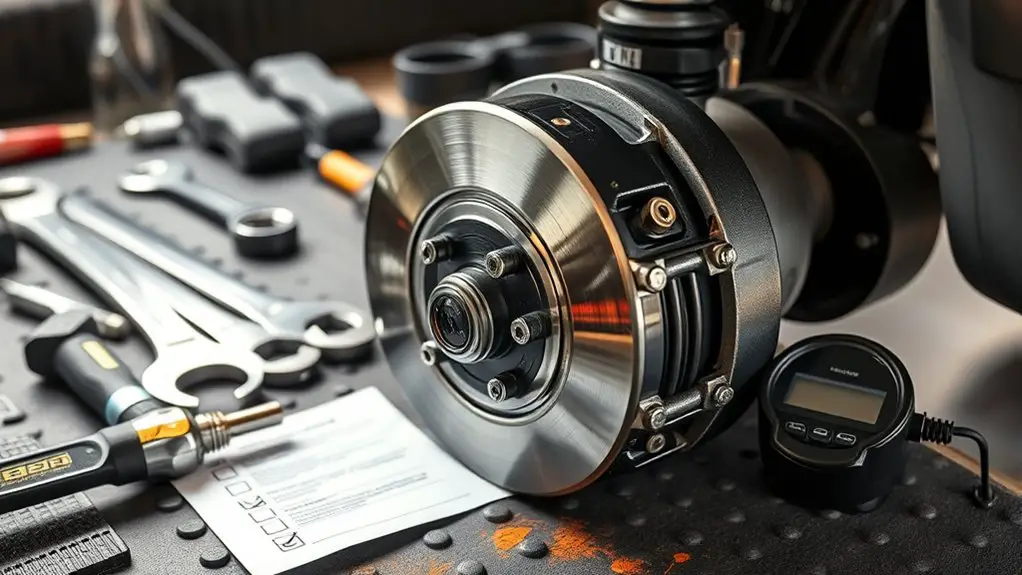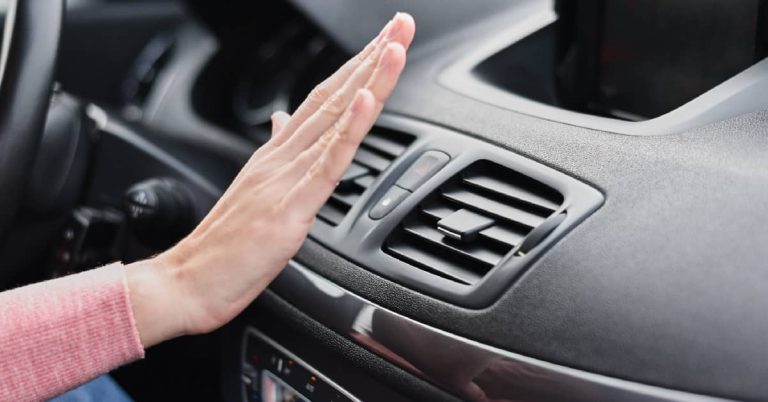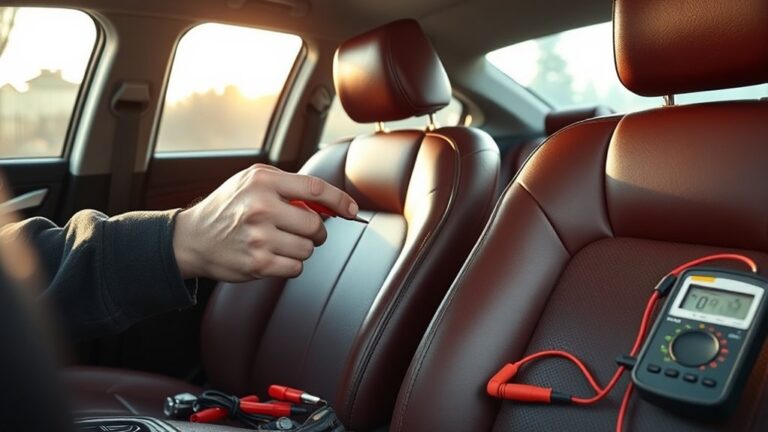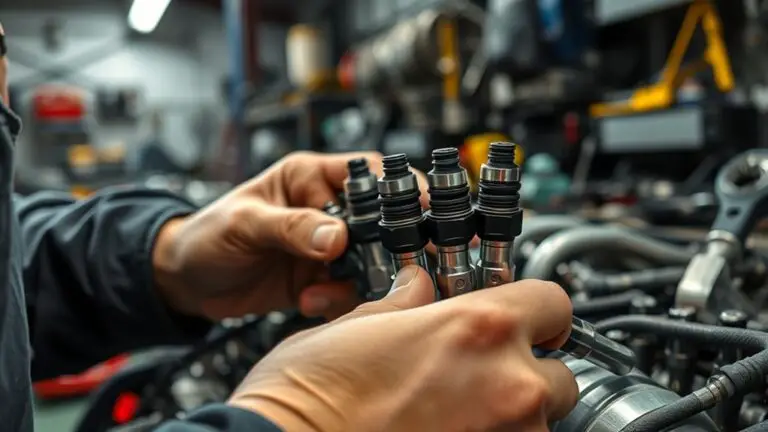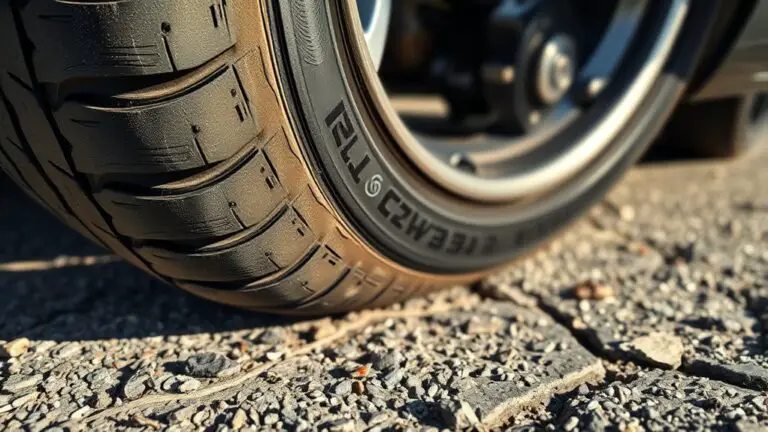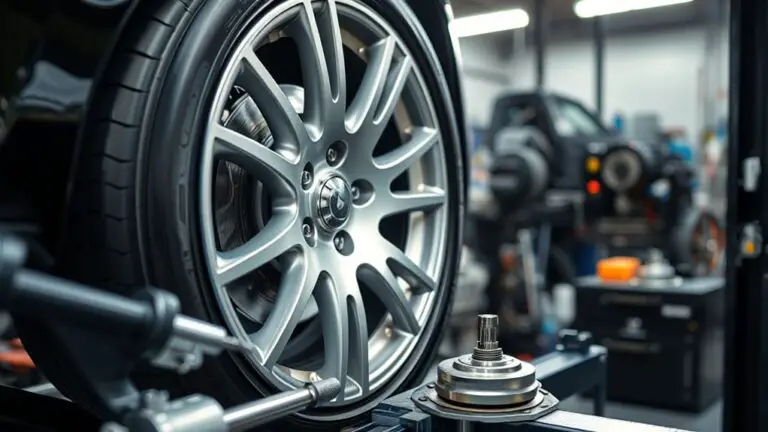Safety Checklist After Fixing Sticky Caliper
After fixing a sticky caliper, it’s essential to perform a safety checklist. Start by inspecting the brake pads for uneven wear. Then, check the brake fluid levels and condition, guaranteeing no contamination. Test the brake functionality by pressing the pedal and listening for unusual noises. Examine brake lines and hoses for cracks and leaks. Finally, conduct a road test to assess performance. Following these steps will help make sure your braking system functions properly, and there’s more to explore on this topic.
Inspect Brake Pads for Uneven Wear
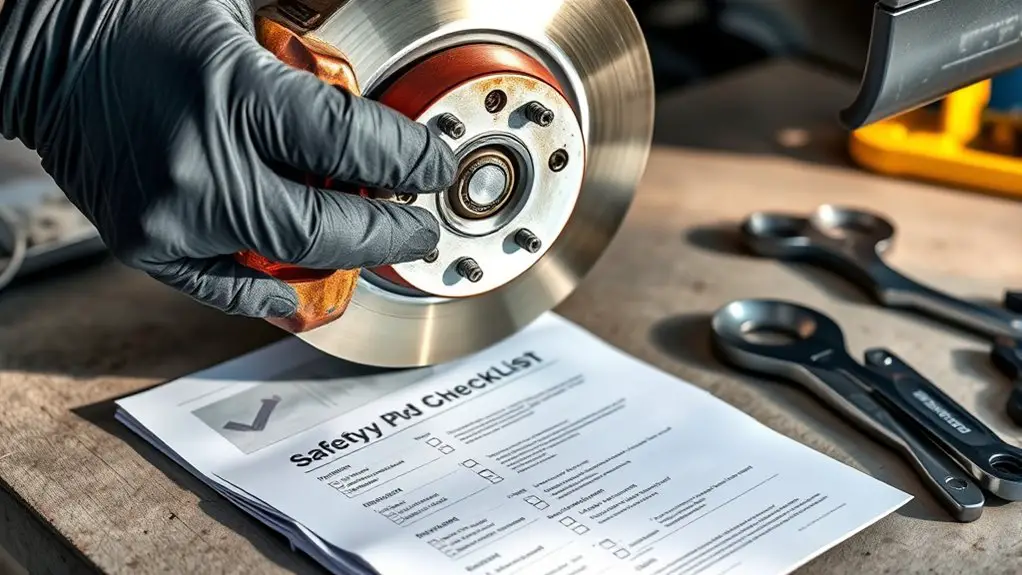
When you inspect brake pads for uneven wear, it’s essential to look for signs of improper contact or misalignment. Begin your brake pad inspection by checking the surface for any irregularities; uneven wear may indicate that the caliper isn’t functioning correctly. Pay attention to both sides of the pad—if one side is considerably thinner, it could signal that the brake caliper is sticking, causing one pad to wear more rapidly than the other.
Conduct an uneven wear analysis by measuring the remaining thickness of each pad. If you notice a difference greater than 1/8 inch, it’s time to address potential issues. Be sure to examine the caliper’s alignment and the condition of the shims, as they can contribute to uneven wear as well. Regular inspections help maintain your vehicle’s braking system, ensuring you have the freedom to drive safely and confidently.
Check Brake Fluid Levels and Condition
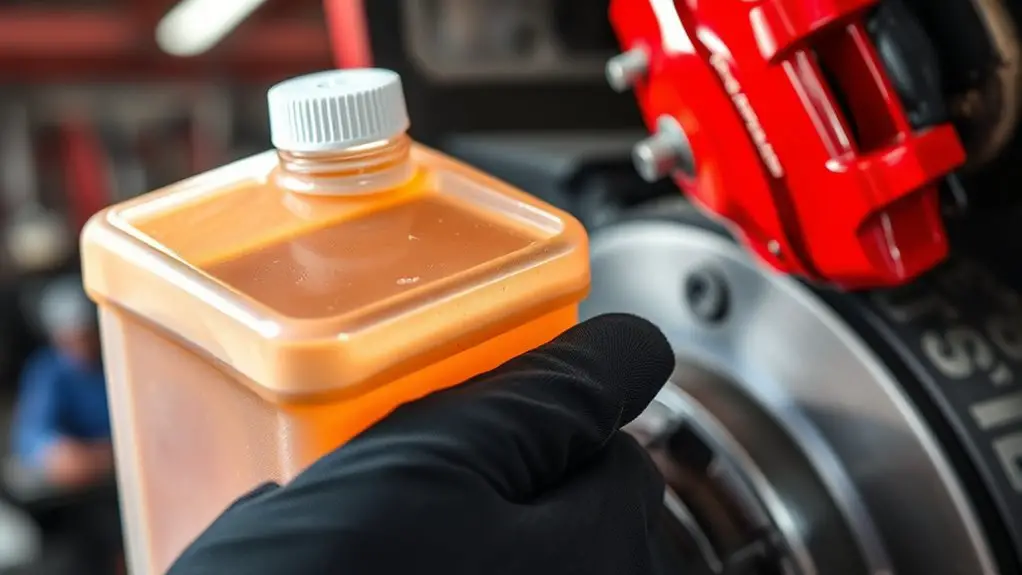
Brake fluid is vital for your vehicle’s braking system, so checking its levels and condition is important for safe operation. Start by locating the brake fluid reservoir, typically found near the back of the engine bay. Verify the fluid level is between the minimum and maximum marks. Low fluid levels can indicate a leak or worn brake components, so address any issues promptly.
Next, inspect the fluid’s condition. Brake fluid should be clear or slightly amber; if it appears dark or murky, it’s time for a change. Contaminated brake fluid can lead to fluid contamination risks, compromising braking performance. Regular brake fluid maintenance is essential to prevent moisture absorption, which can corrode brake components. If you notice any signs of contamination or inadequate levels, replace the fluid and consider flushing the system. Keeping your brake fluid in peak shape guarantees excellent brake function and enhances your driving freedom.
Test Brake Functionality
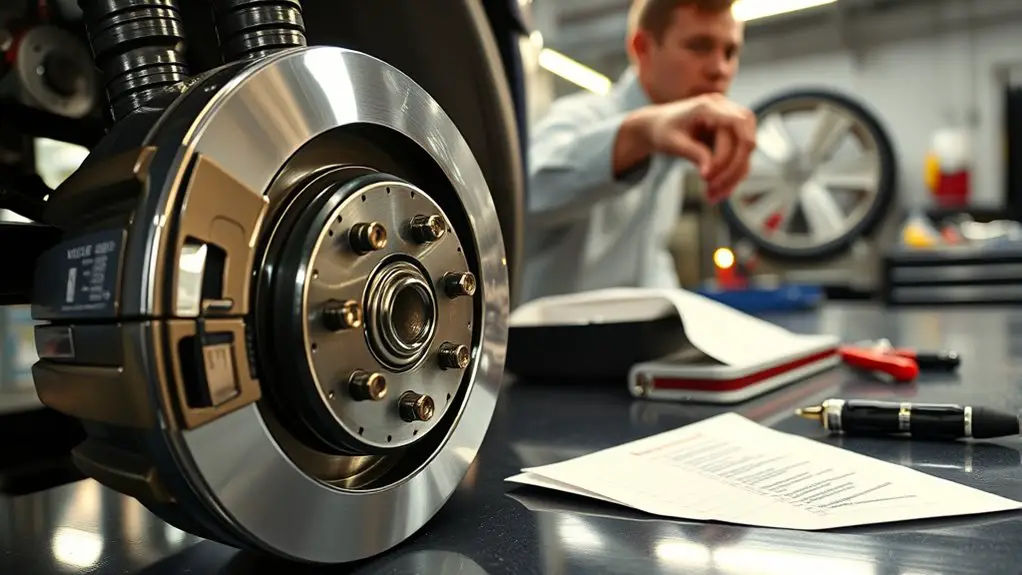
Before hitting the road, it’s crucial to test your vehicle’s brake functionality to guarantee safety and performance. Start by gently pressing the brake pedal to assess its responsiveness; it should feel firm and not sink to the floor. Listen for any unusual noises, such as grinding or squeaking, which could indicate inadequate brake pad maintenance or issues with caliper cleaning.
Next, perform a slow-speed test. Drive at a low speed and apply the brakes gently. The vehicle should stop smoothly without any jerking or pulling to one side. If you experience any abnormalities, recheck your caliper installation and verify everything is properly aligned.
Finally, conduct a more aggressive stop from a moderate speed to confirm that the brakes engage effectively without delay. By following these steps, you can confirm your braking system is functioning efficiently, allowing you to enjoy the freedom of the road with confidence.
Examine Brake Lines and Hoses
Inspecting brake lines and hoses is essential for guaranteeing the overall safety of your braking system. Neglecting brake line maintenance can lead to serious issues, including brake failure. During your hose inspection, look for signs of wear and damage that could compromise performance. Here are key areas to focus on:
- Cracks or fraying: Check for any visible damage that might indicate wear.
- Corrosion: Inspect metal lines for rust or corrosion, which could weaken them.
- Leaks: Look for any fluid leaks around connections or along the hose.
- Secure fittings: Confirm all connections are tight and properly secured to prevent air ingress.
Perform a Road Test for Performance Evaluation
Once you’ve completed the necessary inspections and repairs, it’s crucial to perform a road test to evaluate your braking system’s performance. Start by driving in varied road conditions—smooth highways, rough surfaces, and inclines—to gauge your caliper’s responsiveness. Pay attention to how quickly and evenly the vehicle stops. Monitor for any unusual noises or vibrations that could indicate underlying issues.
During the test, assess key performance metrics such as stopping distance and pedal feel. Confirm the brakes engage smoothly without fading under prolonged use. If you notice any inconsistencies, revisit your previous steps to verify everything is in order.
This road test isn’t just about safety; it’s about reclaiming the freedom of driving with confidence. A well-functioning braking system enhances your overall driving experience, so trust your instincts and take the time to confirm everything operates as it should.
Frequently Asked Questions
How Often Should I Check My Brakes for Issues?
You should check your brakes for issues at least once a month, as studies show that nearly 25% of vehicles have some form of brake problem. Regular brake maintenance is essential for your safety. During each brake inspection, look for wear on pads and rotors, listen for unusual sounds, and feel for vibrations when braking. Staying proactive helps guarantee your vehicle’s reliability and gives you the freedom to drive with confidence.
Can I Drive With a Sticky Caliper Temporarily?
You shouldn’t drive with a sticky caliper, even temporarily. While it might seem like a quick fix, a sticky caliper can lead to uneven brake wear, reduced stopping power, and potential brake failure. If you’re experiencing this issue, consider it a sign that immediate attention is needed. Ignoring it might compromise your freedom on the road, so it’s best to address the problem properly before getting back behind the wheel.
What Are the Signs of a Failing Brake Caliper?
When your brakes start acting like a stubborn mule, it’s time to pay attention. Signs of a failing brake caliper include uneven wear on brake pads, a pulling sensation to one side, or a burning smell from overheating components. You might also notice a drop in brake performance or a caliper that’s stuck. Regular caliper maintenance is essential to guarantee smooth operation and maintain your vehicle’s safety and freedom on the road.
Is It Safe to Use Aftermarket Calipers?
Yes, it can be safe to use aftermarket calipers, provided you choose quality aftermarket options. These calipers often offer improved performance compared to stock ones. However, you must guarantee they meet or exceed OEM specifications for safety and durability. Research reputable brands, read reviews, and verify compatibility with your vehicle. Proper installation and maintenance are essential to maximize caliper performance and maintain your vehicle’s braking efficiency, securing your freedom on the road.
How Much Does Caliper Repair Typically Cost?
When it comes to putting a price on caliper repair, you’re generally looking at around $100 to $300 per caliper, depending on your vehicle and location. To keep costs down, consider some straightforward caliper maintenance tips like regular inspections and timely brake system upgrades. Investing in quality components can save you from more significant expenses down the line. Remember, a well-maintained brake system not only enhances performance but also guarantees your freedom on the road.

